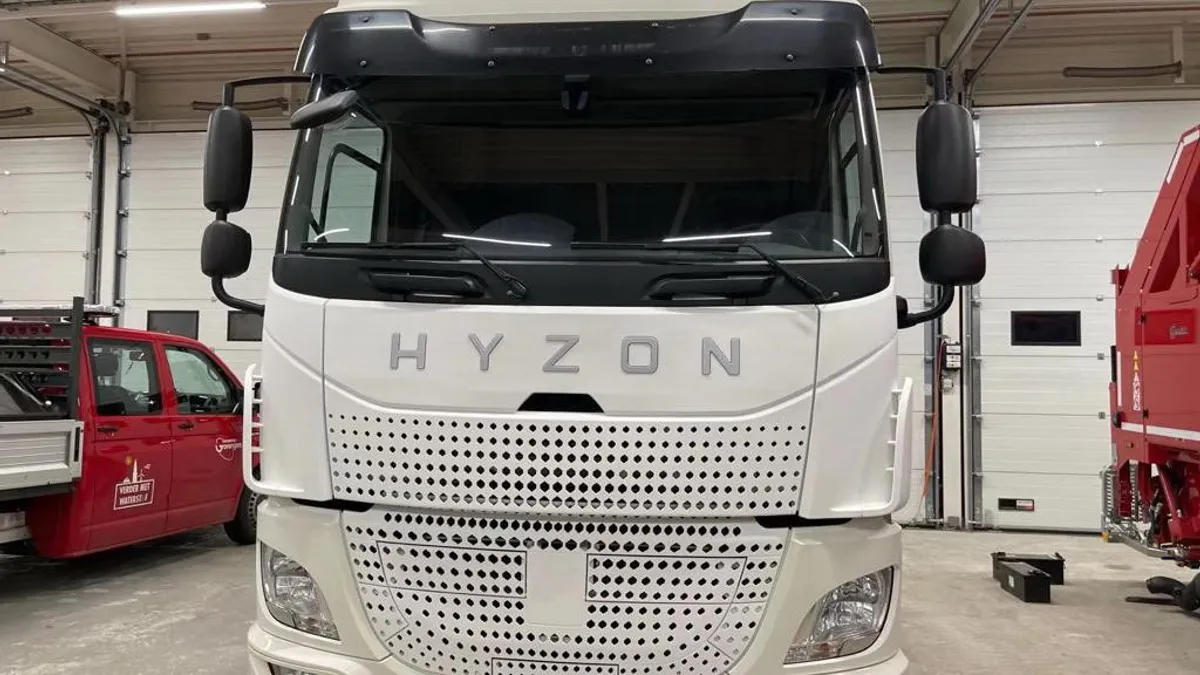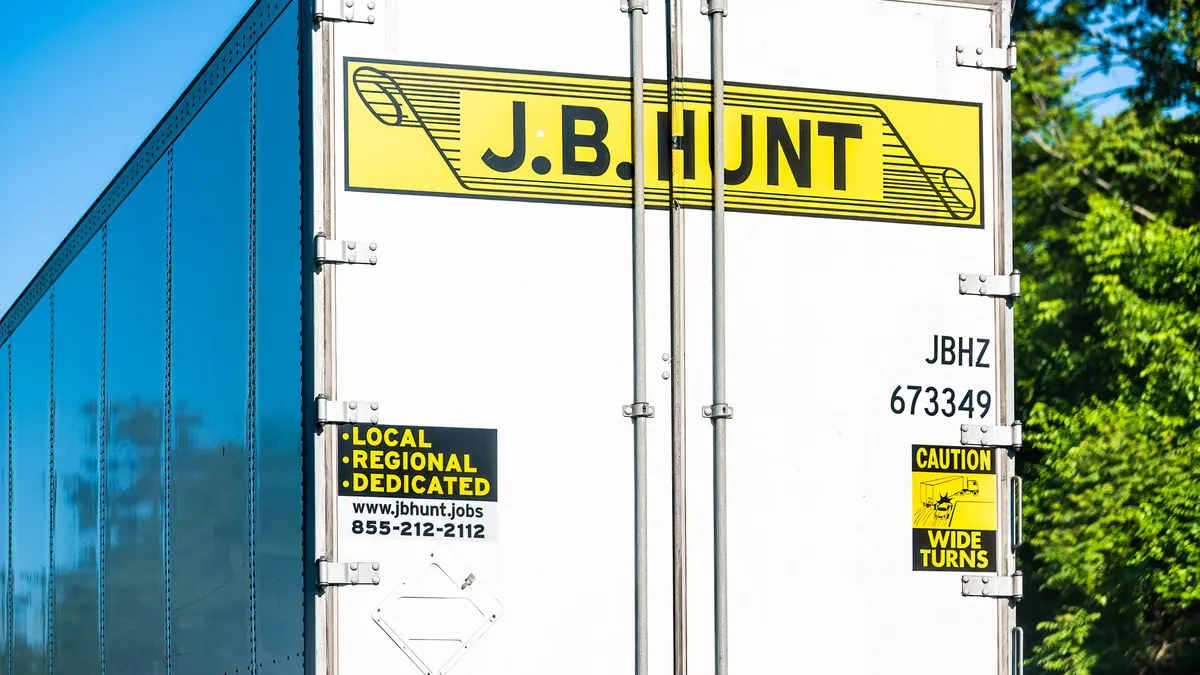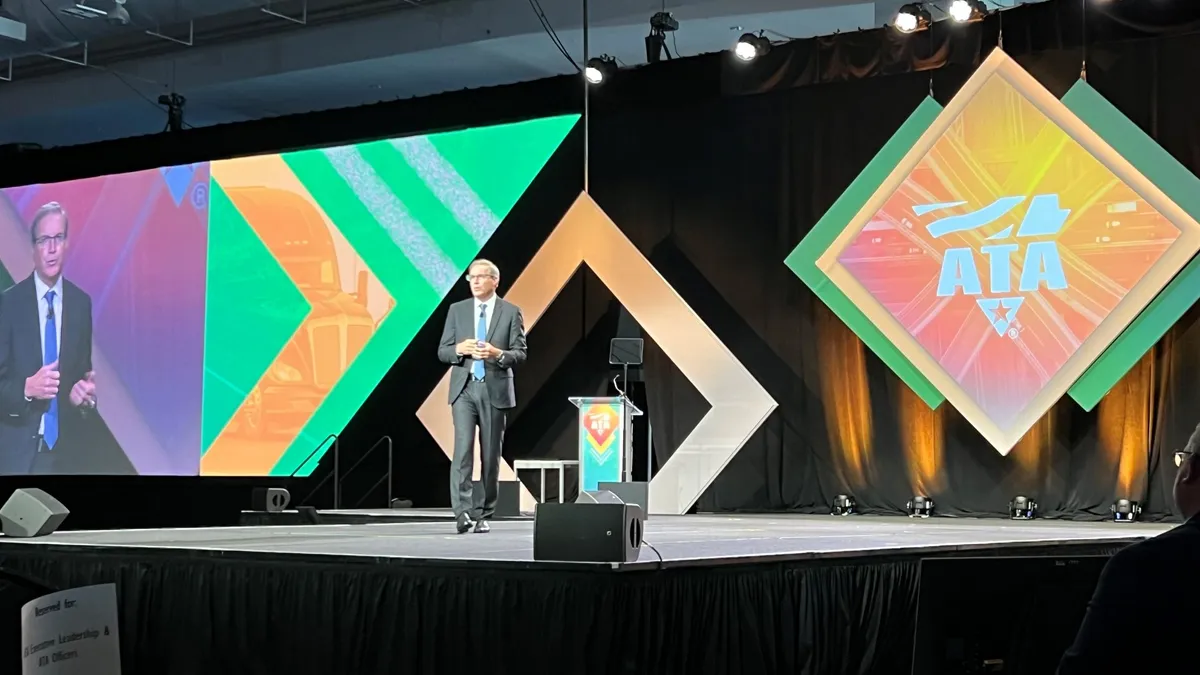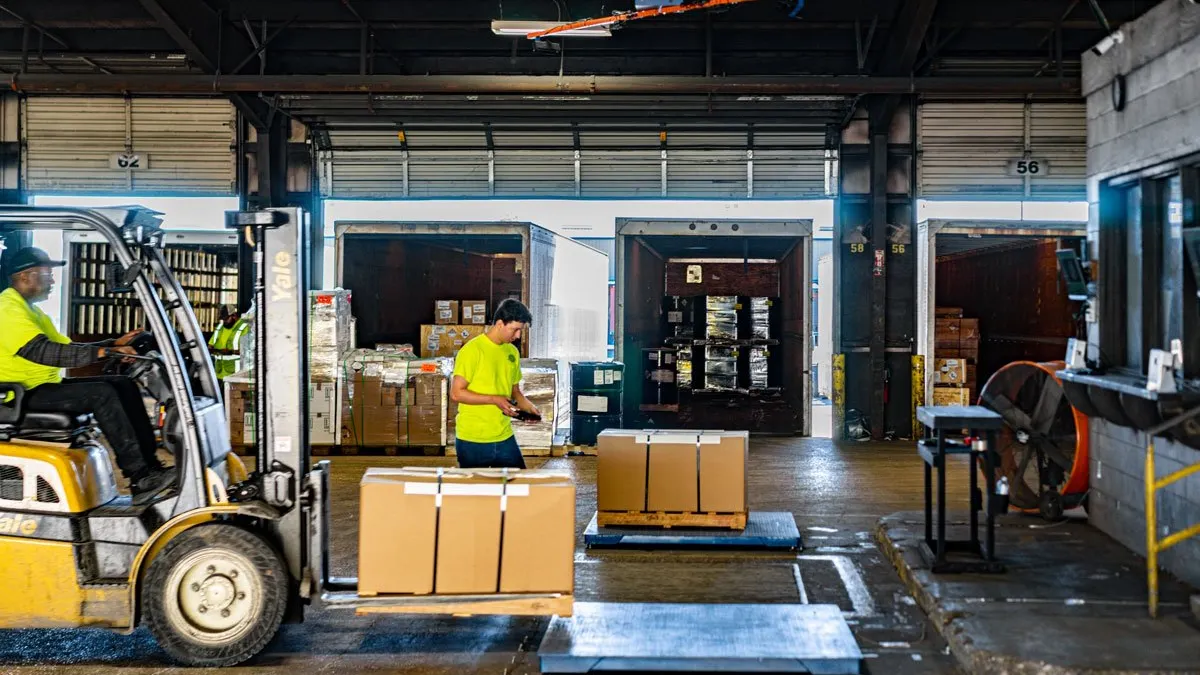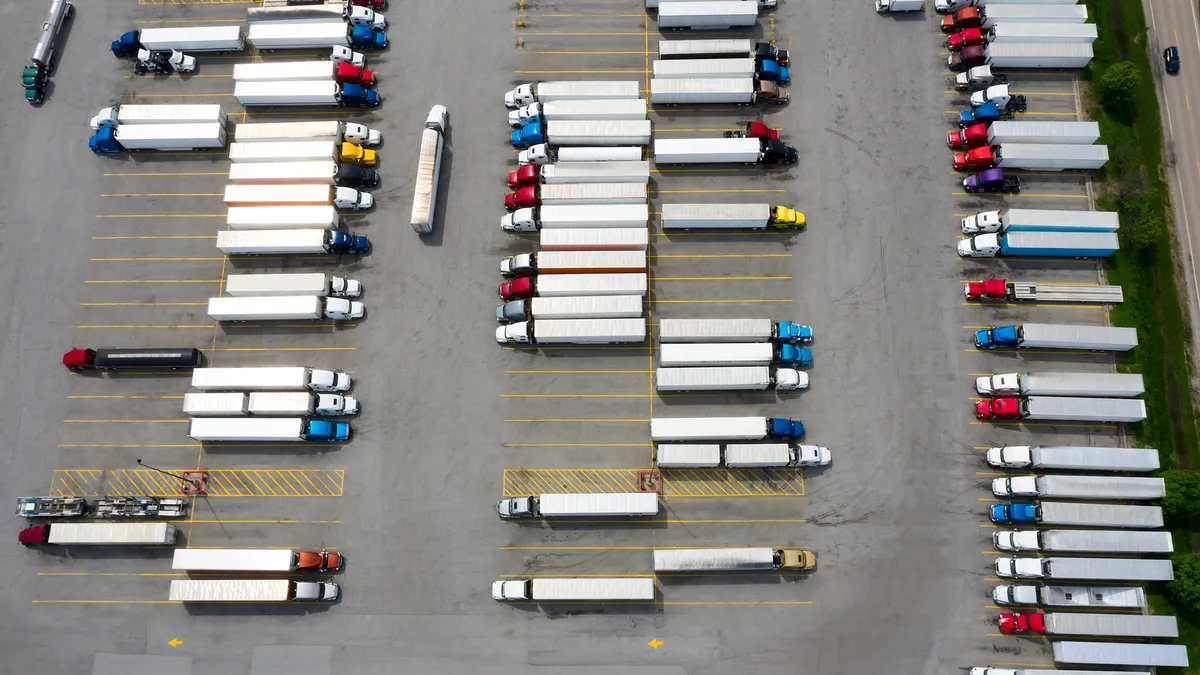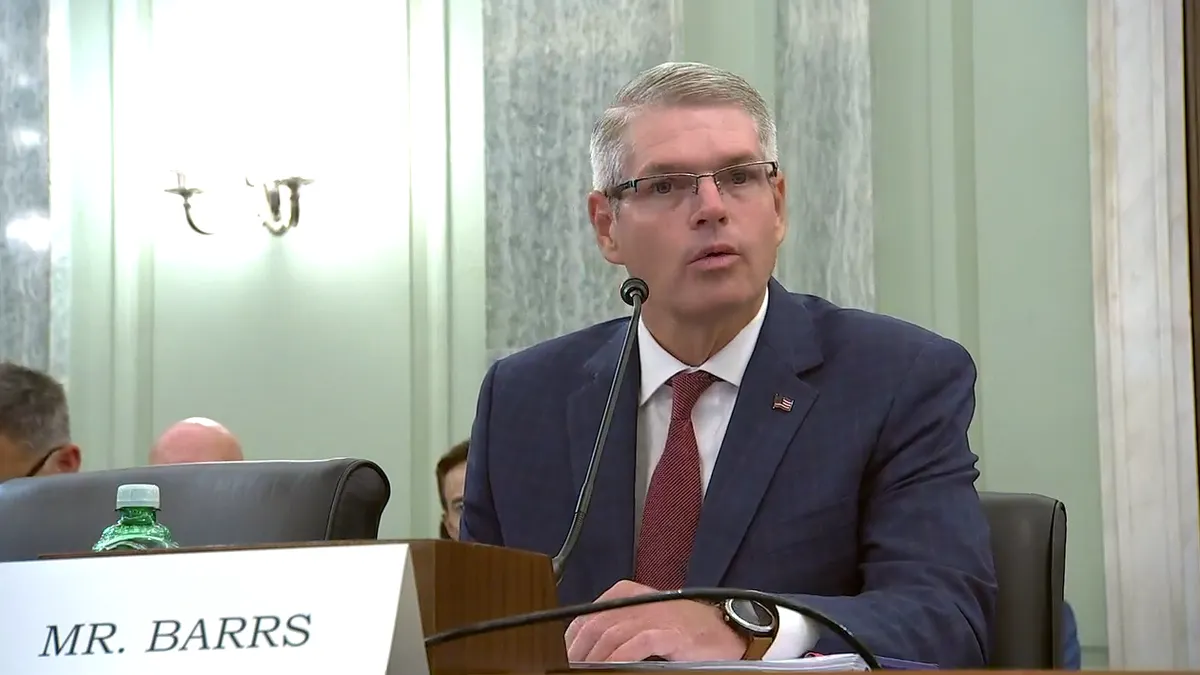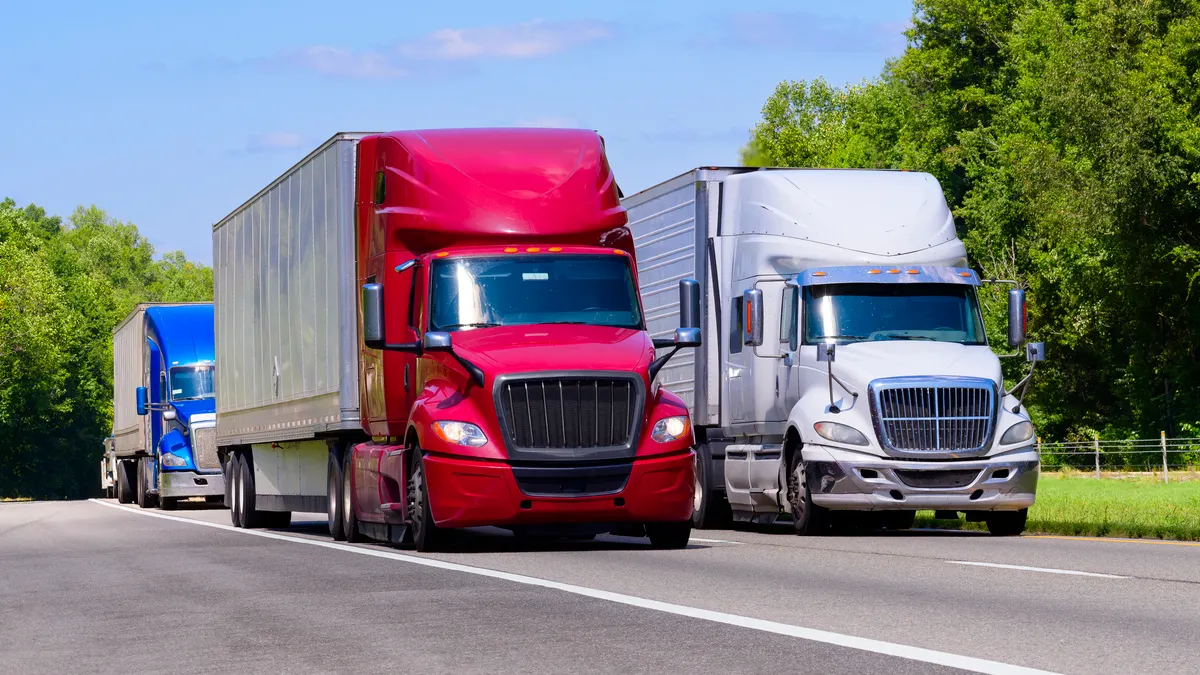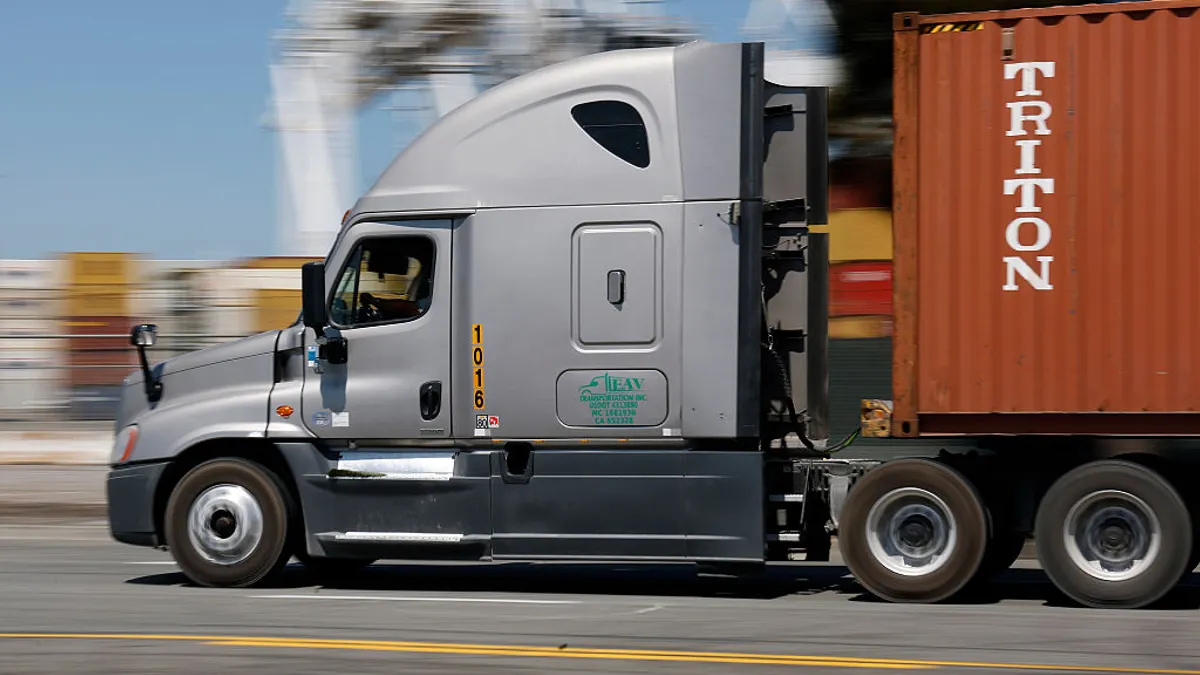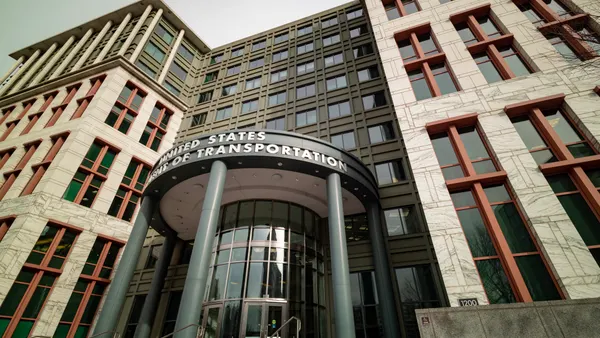A battle is brewing within the trucking industry — the likes of Godzilla versus King Kong, or Superman versus the underpowered Batman.
But this battle wouldn't likely sell many movie tickets outside of physics nerds and transport officials, because it's about which type of trucks will replace diesel-powered Class 8s. Will it be battery-electric vehicles? Or will it be fuel-cell-electric trucks, the hydrogen users?
The clash between BEVs and FCEVs is quietly being waged behind the scenes and at conventions, as fleets eye a future of zero emissions. At stake for OEMs is the hearts and minds — and orders — of big and well-capitalized fleets, likely the first customers to order zero-emission vehicles in North America.
The fight analogies depend on who you ask, and answers can also be based on what power those people favor. But one thing seems clear as 2022 begins: Batteries are in the lead, although by no means is it the clear winner.
The elusive hydrogen highway
To industry insiders, it's a familiar debate. And one in which the industry leader has been reversed.
In the 2000s, former President George W. Bush and former California Gov. Arnold Schwarzenegger embraced hydrogen and spoke of the "hydrogen highways" of the future.
In 2004, Schwarzenegger signed an executive order to create a hydrogen highway — defined as a network of hydrogen fueling stations based along main routes — by 2010, when the governor hoped to have 200 hydrogen fuel stations. And then those highways didn't happen.
Chris Nelder, host of the "Energy Transition Show" and an advocate for electric trucks, said the market didn't see the benefit or long-term viability of hydrogen fuel cells — not even for passenger cars.
In the meantime, advocates of BEVs kept plugging away, despite cheap gasoline and competition from other green modes, including hybrids and natural gas.
"EVs completely ran away with the market."

Chris Nelder
Host of the "Energy Transition Show"
Then came Tesla, with its sleek and in-demand electric cars, which were snapped up by celebrities. Tesla used its momentum to develop the Semi, a Class 8 model whose production keeps getting delayed.
Now, the federal government's newly inked Infrastructure Investment and Jobs Act, also known as the bipartisan infrastructure law, contains $7.5 billion to build a network of EV chargers. President Joe Biden's goal is to create 500,000 charging stations for battery-electric cars and trucks.
"EVs completely ran away with the market," said Nelder. "The reason is, electricity is everywhere."
The usage numbers also show an electric advantage. Tim Denoyer, ACT Research vice president, said while it's hard to peg the number of battery-electric and hydrogen trucks in North American operation, an estimate puts the number of Class 8 BEVs between 4,000 and 5,000. For fuel-cell trucks, "I'd be surprised if it's in the hundreds," said Denoyer.
Nelder said he sees the writing, or numbers, on the wall. He sees Daimler Trucks using battery-electric, while at the same time many private fleets such as PepsiCo and Amazon are turning to lighter battery-electric trucks for their deliveries. It's possible hydrogen will lose across the board, even Class 8, Nelder said.
OEMs, too, have indicated the tide is beginning to turn.
At ACT Expo in the spring of 2019, Roger Nielsen, then the CEO of Daimler Trucks, gave a keynote speech in which he said the nation's largest truckmaker would focus solely on battery-electric trucks. Later, in April 2021, Traton declared the future of heavy trucks was battery-electric.
"Hydrogen trucks ... will lose more and more ground to — increasingly practical — electric trucks, simply because the latter are cheaper to run," wrote Matthias Gründler and Andreas Kammel of Traton.
The two officials wrote that even as hydrogen prices drop, electric trucks will have a continued advantage.
"Trucks are heavily used capital goods that are much more expensive to fuel than they are to acquire," Gründler and Kammel wrote. "The more electric trucks are being utilized, the bigger their energy cost advantage becomes. And just like that, the common conviction that hydrogen trucks are something for the long haul and electric trucks are just to be used for short-haul application starts to fall apart."
Electric trucks have their own challenges, of course. On Jan. 12, the North American Council for Freight Efficiency and the Rocky Mountain Institute released a study on electric truck usage. It summed up what the organizations believe Canada and the United States would need to charge Class 3, 4 and 5 vans and step vans, Class 6 box trucks, Class 8 terminal tractors and Class 8 regional haul tractors in those countries.
The groups together add up to about 5.2 million trucks, the study found, and they would need a total of 168,582 gigawatt hours annually to charge. But in return, more than 100 million metric tons of carbon would be avoided.
Class 8 trucks need more than 60K gWh annually for regional hauls
May the best use case win
The varying applications of heavy trucks create multiple openings for electric and hydrogen-fueled trucks to claim best use. Longer hauls are so far not ideal for battery-electric trucks, while fuel-cell electric truck makers are hotly eyeing those hauls. For now, the shorter the runs, the better battery-electric trucks do.
Parker Meeks, Hyzon chief strategy officer, said truck buyers have three main goals in sizing up a zero-emission truck. One is the truck design itself. The other is cost, for service and replacement. The final is fuel availability.
"It all, frankly, comes down to fuel," said Meeks.
When fleets consider zero-emission vehicles, first they size up what those heavy vehicles can do within the five major applications.
But many fleet managers look past these five applications and wonder if BEVs will best FCEVs, resulting in a clear industrywide winner, according to Mike Roeth, executive director of NACFE.
| The 5 major applications for heavy-duty vehicles |
|---|
| Buses |
| Yard work |
| LTL |
| Regional TL |
| Long-haul TL |
Source: Tim Denoyer, ACT Research vice president
Roeth said at a meeting with fleet executives, they wanted to know who would win the battle for sales supremacy.
"We like cage matches, right?" said Roeth. "It's a hot topic."
For fleets, the strategy is more slow and steady in adoption of BEVs and FCEVs in the Class 8 sector. And it seems electric has some advantage, especially with shorter haul fleets such as LTLs and last-mile.
XPO Logistics is testing several electric Class 8 trucks, made by Daimler Trucks, at a facility in Hayward, California. Its pilot programs in France and Spain, where government officials are pushing green energy harder, are a bit further along, according to Joseph Checkler, XPO vice president of public relations and social media.
"There's a lot of opportunity for electric truck usage but there's technical and economic obstacles for the industry before we hit critical mass," said Checkler.
But XPO's LTL competitor, Saia, decided its buy of BEVs would be in the triple digits. On Jan. 6, Saia signed a letter of intent for 100 Class 8 electric trucks from Nikola. Saia officials said the agreement came after successful demonstrations. The deliveries will occur between 2022 and 2024, with the first 25 likely to arrive in 2022, Saia officials said.
OEMs prepare for a mixed future
Fuel-cell companies believe the future is a mix of technologies to achieve zero emissions. One of them will be hydrogen, because BEVs have issues with range and lengthy charge times.
One application where hydrogen may make some headway is in garbage collection, according to Meeks. While a number of municipalities, including New York City, are testing electric garbage trucks, "most of them don't have much desire to try a second," said Meeks.
The frequent stops-and-starts of garbage collection, combined with the load collections, are taxing the batteries, Meeks said.
The long-haul Class 8 market is also an attractive one to Hyzon. Meeks said its fuel-cell prototypes have 375-mile range, and that may rise to 400 miles, a comforting number for fleets with range anxiety.
Unlike electricity, hydrogen's network is not built out. So, Hyzon plans to make arrangements with partners to develop and distribute hydrogen. On Nov. 10, Hyzon and TC Energy said they have agreed to developments, construction, operation and ownership of hydrogen production facilities — which Hyzon calls hubs — across North America.
But even as Hyzon attempts to build a network and bring hydrogen costs down to parity with diesel — something it believes it can do, especially with federal subsidies — it acknowledges some parts of trucking are dominated by battery-electric. Hyzon will focus on buses, Class 8 and some intensive Class 6 applications, Meeks said.
Some OEMs are targeting all new sectors. Brett Pope, director of central sales electric at Volvo Trucks North America, said his company is preparing multiple zero-emission options, starting with battery-electric.
"As there is no one solution for all customers, Volvo Trucks provides different solutions," Pope said in an email, adding that the company has natural gas and BEVs in production, and it's developing FCEVs.
Roeth, much like Traton and Volvo, said he believes the future will be a mix of zero-emission options, even if battery-electric wins the biggest share.
"It's 'and,' not 'or,'" said Roeth. "We're convinced it's going to be both."


